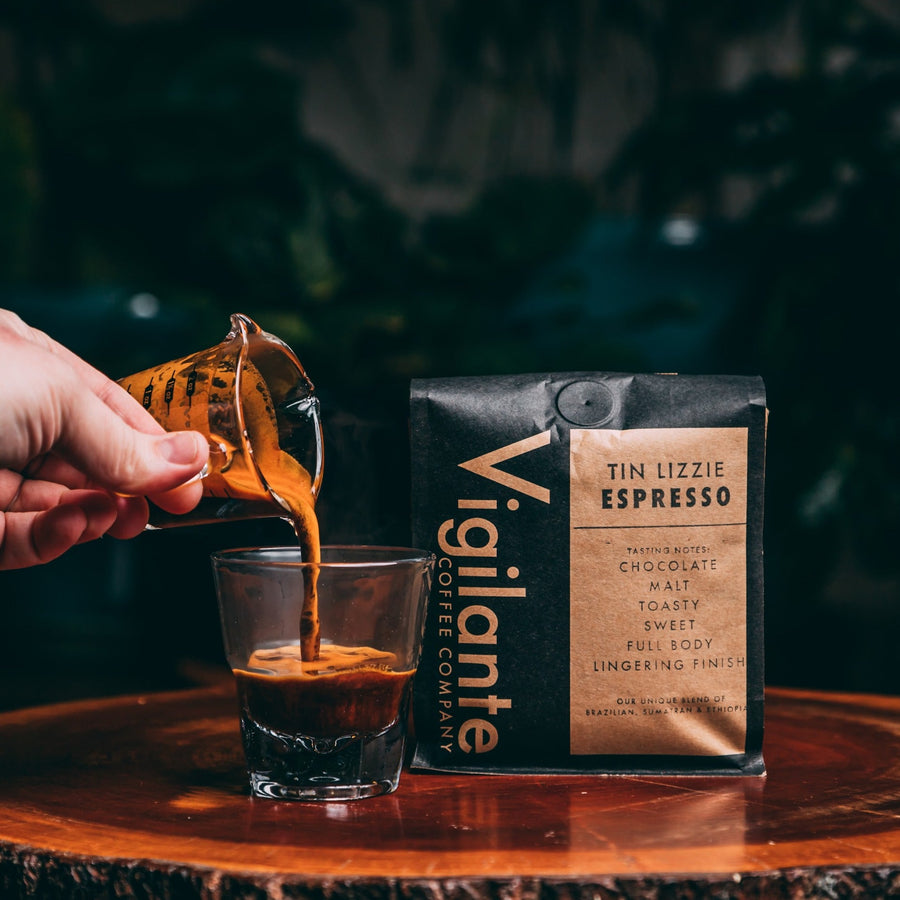SOE Single Origin Espresso – The Go-To Choice for Espresso Lovers
SOE Single Origin Espresso – The Go-To Choice for Espresso Lovers
Blog Article
Recognizing Coffee Beans: the Trip From Espresso to Blended Coffee Beans

The Origins of Coffee: A Global Perspective
While you might believe of coffee as a modern-day staple, its origins map back centuries, linking with societies throughout the world. The story begins in Ethiopia, where tale states a goat herder called Kaldi uncovered the energizing results of coffee beans after discovering his goats frolicking vigorously after eating them.
As trade routes expanded, coffee made its means to Europe in the 17th century, quickly acquiring popularity. It changed from a mystical beverage into a day-to-day ritual, inspiring gatherings and intellectual exchanges. Each culture added its unique spin to coffee prep work, enhancing its background. This international journey highlights just how coffee links us, going beyond boundaries and joining varied traditions through a basic bean.
Cultivation and Harvesting of Coffee Beans
As coffee's journey developed, the focus moved to the farming and harvesting of specific bean ranges, specifically those used for coffee. You'll find that coffee beans frequently come from Arabica or Robusta plants, each offering distinctive tastes. The optimal growing conditions include high altitudes and abundant, well-drained dirt, which enhance the beans' top quality.
Throughout the harvest, selecting approaches differ. Timing is essential; you desire to gather when the cherries get to peak perfection for maximum flavor.
When collected, the beans are planned for handling, which is crucial in determining their final preference. Recognizing the cultivation and gathering processes offers you understanding into what goes into your favored espresso, enriching your gratitude for each and every cup.
Handling Approaches: From Cherry to Bean
Since you've learnt more about gathering coffee beans, let's check out how those cherries change right into the coffee beans you love. You'll see exactly how different harvesting methods impact taste, complied with by the vital actions of fermentation and drying. Lastly, we'll damage down the milling and grading process that identifies your coffee's quality.
Collecting Techniques Explained
When it involves coffee, recognizing harvesting methods is essential, since they straight impact the taste and quality of the beans you appreciate. There are 2 primary techniques: selective selecting and strip picking. Discerning selecting involves hand-picking only ripe cherries, ensuring you obtain the ideal quality beans. This approach usually causes a richer flavor profile, though it's even more labor-intensive. On the other hand, strip selecting means harvesting all cherries at the same time, despite perfection. While it's quicker and less expensive, this can lead to a mix of flavors, affecting the final item. Eventually, the choice of collecting method can considerably affect your coffee experience, so it's worth recognizing how those beans made it to your mug.
Fermentation and Drying Out
After collecting, the following steps in handling coffee beans play a considerable function in shaping their flavor. You'll discover that fermentation is vital, as it helps damage down the mucilage surrounding the beans, improving their preference profile. Depending on the approach, this process can last from a few hours to several days, with varying outcomes based upon temperature level and moisture.
Once fermentation is complete, drying follows, which is similarly crucial. You can select from mechanical or sun-drying drying methods. Sun-drying enables the beans to take in flavors from the setting, while mechanical drying assurances constant wetness levels regardless of weather condition. Appropriate drying out is necessary to protect against mold and mildew and maintain the beans' quality, eventually affecting your cup of coffee.
Milling and Grading Refine
As fermentation and drying out established the stage for taste growth, the milling and grading process assurances that just the most effective coffee beans make it to your mug. This stage entails eliminating the outer layers of the coffee cherry, consisting of the parchment and husk. After milling, the beans are sorted by size and weight, making sure a consistent quality. You'll locate that grading aids determine flaws and classify beans, which affects taste and fragrance. Top quality beans obtain a greater grade, resulting in a richer coffee experience. When graded, the beans await product packaging and shipping, protecting their unique features. This thorough process is necessary for delivering the remarkable taste you appreciate in every sip of your preferred brew.
Toasting Techniques: Opening Taste Prospective
When you roast coffee beans, the method you select can significantly impact the flavor profile. Recognizing the partnership between time, temperature level, and roasting techniques is vital to exposing the potential of your mixture. Let's explore just how these components collaborated to produce the perfect mug.
Roasting Techniques Explained
While you may think that all coffee roasting techniques yield the exact same results, the truth is that each technique reveals unique flavor capacities in the beans. Drum roasting utilizes a turning drum to uniformly disperse warmth, improving caramelization and generating a well balanced taste. Air roasting, on the various other hand, flows warm air around the beans, promoting a lighter roast with noticable level of acidity.

Influence On Taste Account
Various toasting methods not just influence the process but also considerably influence the flavor account of the coffee beans. When you pick a light roast, you'll experience brilliant level of acidity and floral notes, showcasing the bean's origin. In contrast, a medium roast balances acidity with sweet taste, frequently exposing chocolatey undertones. Dark roasts, on the other hand, bring out bold, great smoky tastes, sometimes concealing the bean's distinct features. Each method discloses various oils and substances, causing a wide variety of flavors. By trying out various roasting designs, you can uncover which accounts reverberate with your taste. Recognizing these nuances aids you appreciate the virtuosity behind your cup of coffee, enhancing your total experience with every sip.
Time and Temperature Level Aspects
To release the complete taste possibility of coffee beans, both time and investigate this site temperature throughout the roasting procedure play considerable duties. When roasting, you'll find that greater temperature levels can quickly create flavors, but if you rush it, you might wind up with burned notes. On the other hand, lower temperature levels enable for a more steady taste advancement, showcasing the beans' special features.

Timing is equally as important; extending the roast as well long can lead to a loss of acidity and illumination, while also brief a roast may leave the beans underdeveloped. Finding that sweet area needs method and testing. By changing these factors, you can expose the rich, complicated tastes concealed within each bean, creating a truly exceptional coffee experience.
The Art of Mixing: Crafting Special Coffee Profiles

Start by picking a base coffee that provides a strong foundation. Choose complementary beans to boost certain flavor notes. As an example, a bright Ethiopian bean can bring fruitiness, while a rich Brazilian coffee adds body. Trial and error is vital-- do not be terrified to change ratios until you discover your excellent account.
As you blend, keep in mind that each combination informs a tale. You're not simply making coffee; you're producing an experience. So, take your time, taste frequently, and take pleasure in the trip of uncovering your trademark mix.
Brewing Approaches: Exactly How Preparation Impacts Flavor
Blending coffee opens up a domain name of flavor opportunities, however just how you make that mix can substantially influence your final mug. On the other hand, a pour-over highlights the coffee's quality and brightness, ideal for showcasing delicate notes.
Espresso, with its high stress, generates a focused shot that highlights sweetness and crema. If you favor a lighter brew, consider a cool mixture approach; it yields a smooth, less acidic preference.
Ultimately, experimentation is vital. Readjusting variables like water temperature level, grind dimension, and make time can transform your coffee's profile. Welcome the art of brewing to find the flavors concealed in your coffee blends. The right technique can raise your experience to new heights.
The Future of Coffee: Sustainability and Innovation
As the coffee sector evolves, sustainability and advancement are becoming vital for addressing environmental difficulties and conference consumer demands. You'll notice that more coffee firms are embracing green techniques, from sourcing beans fairly to implementing sustainable farming methods. These changes not only aid the world but also enhance the quality Full Report of the coffee you delight in.
You may see innovations like biodegradable product packaging and water-saving developing approaches that reduce waste. Advanced technology, such as blockchain, is likewise coming to be preferred, making sure transparency in the supply chain, which allows you to map your coffee back to its origins.
Additionally, buying regional areas and supporting farmers with reasonable profession campaigns promotes a much more sustainable coffee community. As you drink your following mug, keep in mind that your selections can add to a brighter future for coffee. By going with sustainable brand names, you're not just delighting in a beverage; you're making a favorable influence on the world.
Regularly Asked Inquiries
What Is the Distinction In Between Arabica and Robusta Beans?
Arabica beans webpage are smoother, sweeter, and have a greater acidity, while robusta beans are more powerful, extra bitter, and consist of more high levels of caffeine. When making your coffee., you'll notice these differences in taste and scent.
Exactly How Does Altitude Affect Coffee Bean Taste?
Altitude impacts coffee bean taste substantially. Higher elevations generate beans with brighter level of acidity and complicated flavors, while lower elevations typically produce beans that are much heavier and much less nuanced. You'll see these differences in your cup!
What Are the Health And Wellness Benefits of Drinking Coffee?
Drinking coffee can enhance your energy, boost psychological emphasis, and also improve physical efficiency. It's rich in anti-oxidants, may decrease the threat of certain conditions, and can advertise a healthier metabolic process when consumed in moderation.
Can Coffee Beans Be Reused for Developing?
Yes, you can reuse coffee beans for brewing, however the taste may be weak. If you enjoy exploring, try reusing them in various methods, like cool mixtures or including in smoothies for an additional kick.
Exactly how Should I Shop Coffee Beans for Freshness?
To keep your coffee beans fresh, keep them in an impermeable container in an amazing, dark area. Prevent revealing them to warmth, dampness, or light, as these variables can promptly deteriorate their flavor and scent.
Recognizing Coffee Beans: the Journey From Espresso to Blended Coffee Beans.
Now that you've found out about harvesting espresso beans, allow's discover just how those cherries transform into the coffee beans you love.When you roast coffee beans, the technique you pick can drastically influence the taste account - Single Origin Espresso.While you might think that all coffee toasting techniques produce the exact same results, the fact is that each technique reveals distinct taste capacities in the beans.Different toasting methods not just affect the process yet also significantly impact the flavor account of the coffee beans
Report this page